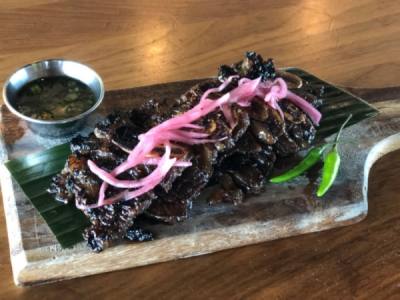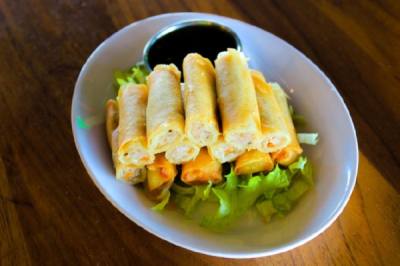Those rules do not exist for Filipino food. The Philippines is a nation of 7,000 islands and nearly as many cultural influences—from Chinese to Malaysian to Spanish to American—and while there are traditional recipes passed down from generation to generation, there is no instruction manual.
All that has led Mark Pascual and Giovan Cuchapin, the co-owners of Austin restaurant Be More Pacific, to be careful about defining the difference between traditional and authentic.
“We consider ourselves a traditional Filipino restaurant. As in, we took recipes that we learned from our past, from our parents, from our friends,” Cuchapin said.
“No one’s unified the way to do each dish,” Pascual added.
Cuchapin and Pascual are both from Houston and met at The University of Texas in 2000 through the Filipino Student Association. In 2011, they started Be More Pacific as a food truck before opening their brick-and-mortar location in 2017. In February, Cuchapin and Pascual opened their second location, expanding to Houston with a restaurant in the Heights neighborhood.
While there is no instructional manual or government body defining what authentic Filipino food is and what it is not, there is a strong sense of pride in the Filipino food tradition that Cuchapin and Pascual want to continue.
“It’s kind of our mission to make sure to keep the food going and make sure it doesn’t get lost,” Pascual said.








